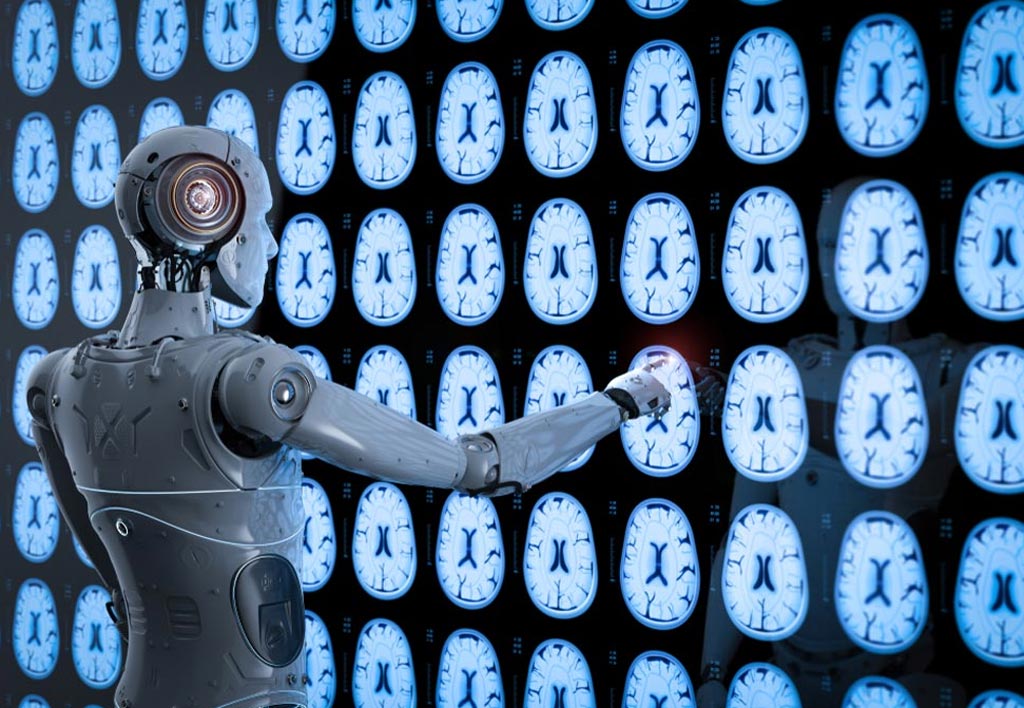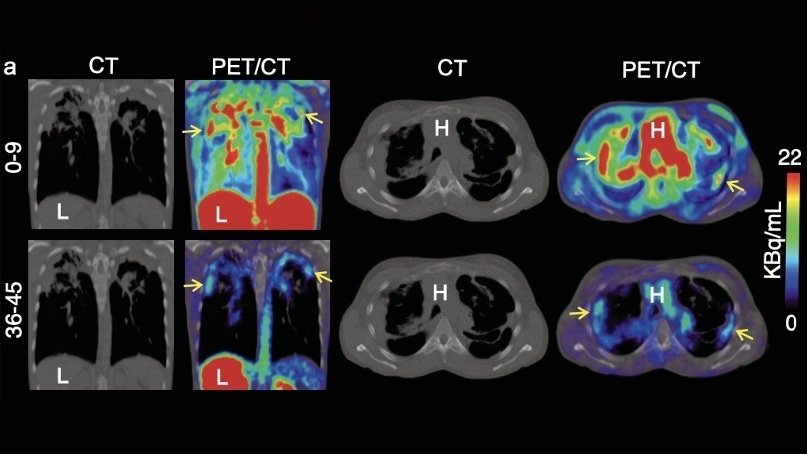ACR Releases Second Research Road Map on Medical Imaging AI
|
By MedImaging International staff writers Posted on 24 Jun 2019 |

Image: New research outlines the challenges, opportunities and priorities for foundational research in AI for medical imaging (Photo courtesy of ABM).
The Journal of the American College of Radiology (JACR) has published a report detailing real-world artificial intelligence (AI) challenges and summarizing the priorities for translational research in AI for medical imaging to help accelerate the safe and effective use of AI in clinical practice. The report is the second part of a road map published in Radiology outlining the challenges, opportunities and priorities for foundational research in AI for medical imaging. The two reports are the outcome of an August 2018 workshop convened by the National Institute of Biomedical Imaging and Bioengineering {(NIBIB) Bethesda, MA, USA} to explore the future of AI in medical imaging.
The second report outlines four key priorities, namely creating structured AI use cases, defining and highlighting clinical challenges potentially solvable by AI; establishing methods to encourage data sharing for training and testing AI algorithms to promote generalizability to widespread clinical practice and mitigate unintended bias; establishing tools for validation and performance monitoring for AI algorithms to facilitate regulatory approval; and developing standards and common data elements for seamless integration of AI tools into existing clinical workflows.
“Radiology has transformed the practice of medicine in the past century, and AI has the potential to radically impact radiology in positive ways,” said Krishna Kandarpa, MD, PhD, co-author of the report and director of research sciences and strategic directions at NIBIB. “This roadmap is a timely survey and analysis by experts at federal agencies and among our industry and professional societies that will help us take the best advantage of AI technologies as they impact the medical imaging field.”
“Our companion paper gave a roadmap to advance foundational machine learning research. But for foundational research to benefit patients, novel algorithms must be evaluated and deployed in a safe and effective manner. This new roadmap paper gives guidance for the clinical translation of AI innovation,” said Curtis P. Langlotz, MD, PhD, report co-author and RSNA board liaison for information technology and annual meeting. “Together, these two connected roadmaps show us how AI not only will transform the work of radiologists and other medical imagers, but also will enhance the delivery of care throughout the clinical environment.”
Related Links:
National Institute of Biomedical Imaging and Bioengineering
The second report outlines four key priorities, namely creating structured AI use cases, defining and highlighting clinical challenges potentially solvable by AI; establishing methods to encourage data sharing for training and testing AI algorithms to promote generalizability to widespread clinical practice and mitigate unintended bias; establishing tools for validation and performance monitoring for AI algorithms to facilitate regulatory approval; and developing standards and common data elements for seamless integration of AI tools into existing clinical workflows.
“Radiology has transformed the practice of medicine in the past century, and AI has the potential to radically impact radiology in positive ways,” said Krishna Kandarpa, MD, PhD, co-author of the report and director of research sciences and strategic directions at NIBIB. “This roadmap is a timely survey and analysis by experts at federal agencies and among our industry and professional societies that will help us take the best advantage of AI technologies as they impact the medical imaging field.”
“Our companion paper gave a roadmap to advance foundational machine learning research. But for foundational research to benefit patients, novel algorithms must be evaluated and deployed in a safe and effective manner. This new roadmap paper gives guidance for the clinical translation of AI innovation,” said Curtis P. Langlotz, MD, PhD, report co-author and RSNA board liaison for information technology and annual meeting. “Together, these two connected roadmaps show us how AI not only will transform the work of radiologists and other medical imagers, but also will enhance the delivery of care throughout the clinical environment.”
Related Links:
National Institute of Biomedical Imaging and Bioengineering
Latest Industry News News
- GE HealthCare and NVIDIA Collaboration to Reimagine Diagnostic Imaging
- Patient-Specific 3D-Printed Phantoms Transform CT Imaging
- Siemens and Sectra Collaborate on Enhancing Radiology Workflows
- Bracco Diagnostics and ColoWatch Partner to Expand Availability CRC Screening Tests Using Virtual Colonoscopy
- Mindray Partners with TeleRay to Streamline Ultrasound Delivery
- Philips and Medtronic Partner on Stroke Care
- Siemens and Medtronic Enter into Global Partnership for Advancing Spine Care Imaging Technologies
- RSNA 2024 Technical Exhibits to Showcase Latest Advances in Radiology
- Bracco Collaborates with Arrayus on Microbubble-Assisted Focused Ultrasound Therapy for Pancreatic Cancer
- Innovative Collaboration to Enhance Ischemic Stroke Detection and Elevate Standards in Diagnostic Imaging
- RSNA 2024 Registration Opens
- Microsoft collaborates with Leading Academic Medical Systems to Advance AI in Medical Imaging
- GE HealthCare Acquires Intelligent Ultrasound Group’s Clinical Artificial Intelligence Business
- Bayer and Rad AI Collaborate on Expanding Use of Cutting Edge AI Radiology Operational Solutions
- Polish Med-Tech Company BrainScan to Expand Extensively into Foreign Markets
- Hologic Acquires UK-Based Breast Surgical Guidance Company Endomagnetics Ltd.
Channels
Radiography
view channel
AI Generates Future Knee X-Rays to Predict Osteoarthritis Progression Risk
Osteoarthritis, a degenerative joint disease affecting over 500 million people worldwide, is the leading cause of disability among older adults. Current diagnostic tools allow doctors to assess damage... Read more
AI Algorithm Uses Mammograms to Accurately Predict Cardiovascular Risk in Women
Cardiovascular disease remains the leading cause of death in women worldwide, responsible for about nine million deaths annually. Despite this burden, symptoms and risk factors are often under-recognized... Read moreMRI
view channel
AI-Assisted Model Enhances MRI Heart Scans
A cardiac MRI can reveal critical information about the heart’s function and any abnormalities, but traditional scans take 30 to 90 minutes and often suffer from poor image quality due to patient movement.... Read more
AI Model Outperforms Doctors at Identifying Patients Most At-Risk of Cardiac Arrest
Hypertrophic cardiomyopathy is one of the most common inherited heart conditions and a leading cause of sudden cardiac death in young individuals and athletes. While many patients live normal lives, some... Read moreUltrasound
view channel
Ultrasound Probe Images Entire Organ in 4D
Disorders of blood microcirculation can have devastating effects, contributing to heart failure, kidney failure, and chronic diseases. However, existing imaging technologies cannot visualize the full network... Read more
Disposable Ultrasound Patch Performs Better Than Existing Devices
Wearable ultrasound devices are widely used in diagnostics, rehabilitation monitoring, and telemedicine, yet most existing models rely on lead-based piezoelectric ceramics that pose health and environmental risks.... Read moreNuclear Medicine
view channel
New Imaging Solution Improves Survival for Patients with Recurring Prostate Cancer
Detecting recurrent prostate cancer remains one of the most difficult challenges in oncology, as standard imaging methods such as bone scans and CT scans often fail to accurately locate small or early-stage tumors.... Read more
PET Tracer Enables Same-Day Imaging of Triple-Negative Breast and Urothelial Cancers
Triple-negative breast cancer (TNBC) and urothelial bladder carcinoma (UBC) are aggressive cancers often diagnosed at advanced stages, leaving limited time for effective treatment decisions.... Read more
New Camera Sees Inside Human Body for Enhanced Scanning and Diagnosis
Nuclear medicine scans like single-photon emission computed tomography (SPECT) allow doctors to observe heart function, track blood flow, and detect hidden diseases. However, current detectors are either... Read more
Novel Bacteria-Specific PET Imaging Approach Detects Hard-To-Diagnose Lung Infections
Mycobacteroides abscessus is a rapidly growing mycobacteria that primarily affects immunocompromised patients and those with underlying lung diseases, such as cystic fibrosis or chronic obstructive pulmonary... Read moreGeneral/Advanced Imaging
view channel
New Ultrasmall, Light-Sensitive Nanoparticles Could Serve as Contrast Agents
Medical imaging technologies face ongoing challenges in capturing accurate, detailed views of internal processes, especially in conditions like cancer, where tracking disease development and treatment... Read more
AI Algorithm Accurately Predicts Pancreatic Cancer Metastasis Using Routine CT Images
In pancreatic cancer, detecting whether the disease has spread to other organs is critical for determining whether surgery is appropriate. If metastasis is present, surgery is not recommended, yet current... Read moreImaging IT
view channel
New Google Cloud Medical Imaging Suite Makes Imaging Healthcare Data More Accessible
Medical imaging is a critical tool used to diagnose patients, and there are billions of medical images scanned globally each year. Imaging data accounts for about 90% of all healthcare data1 and, until... Read more




















